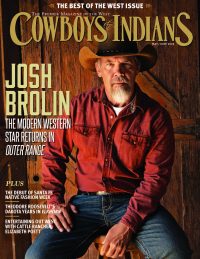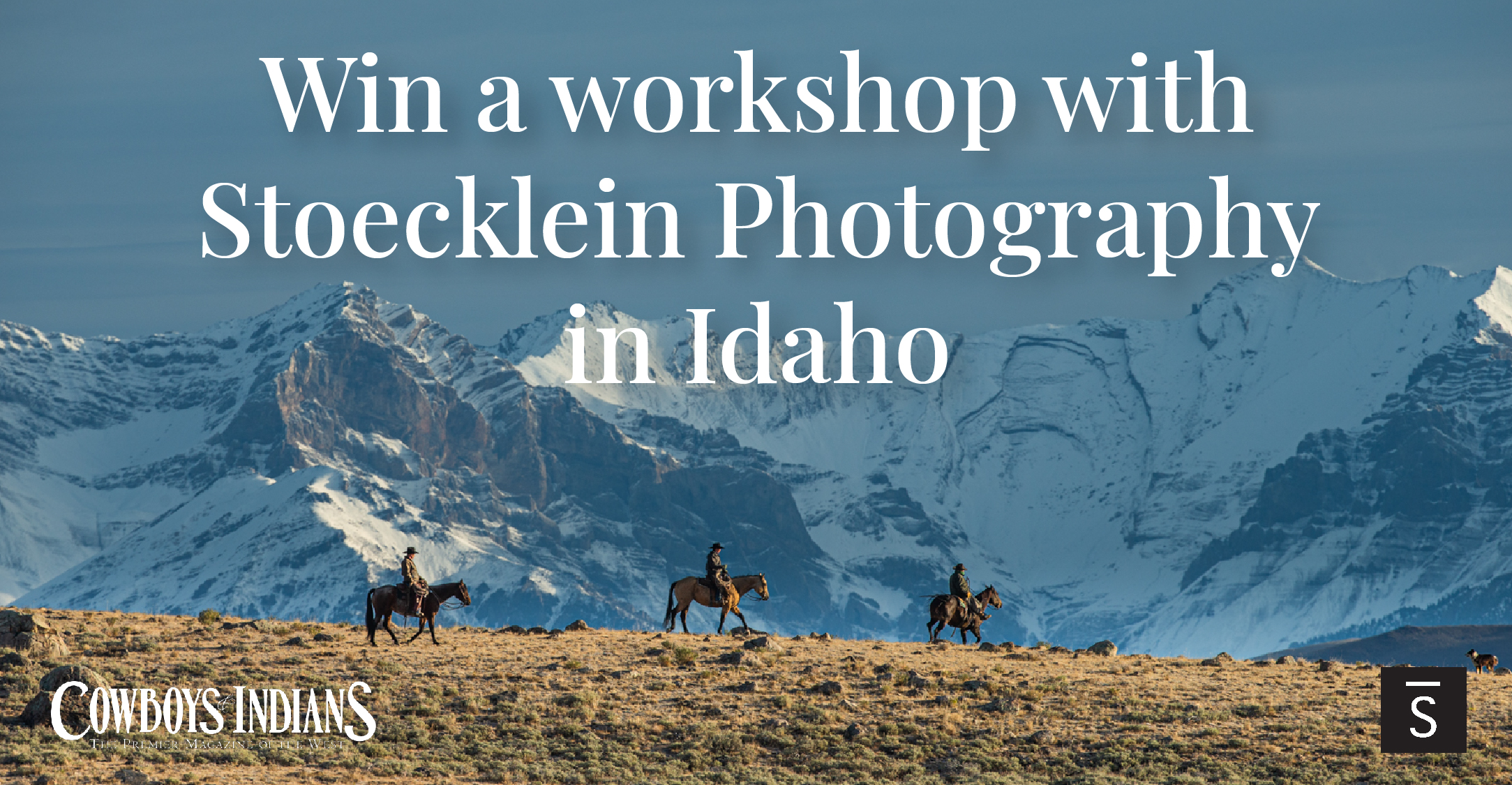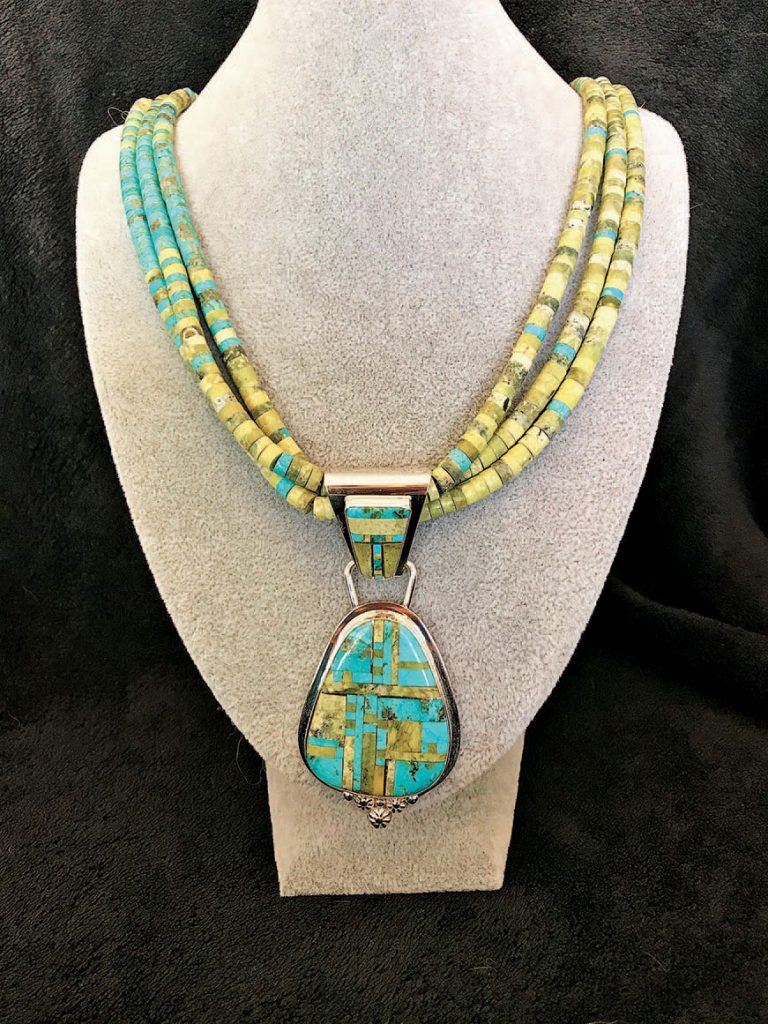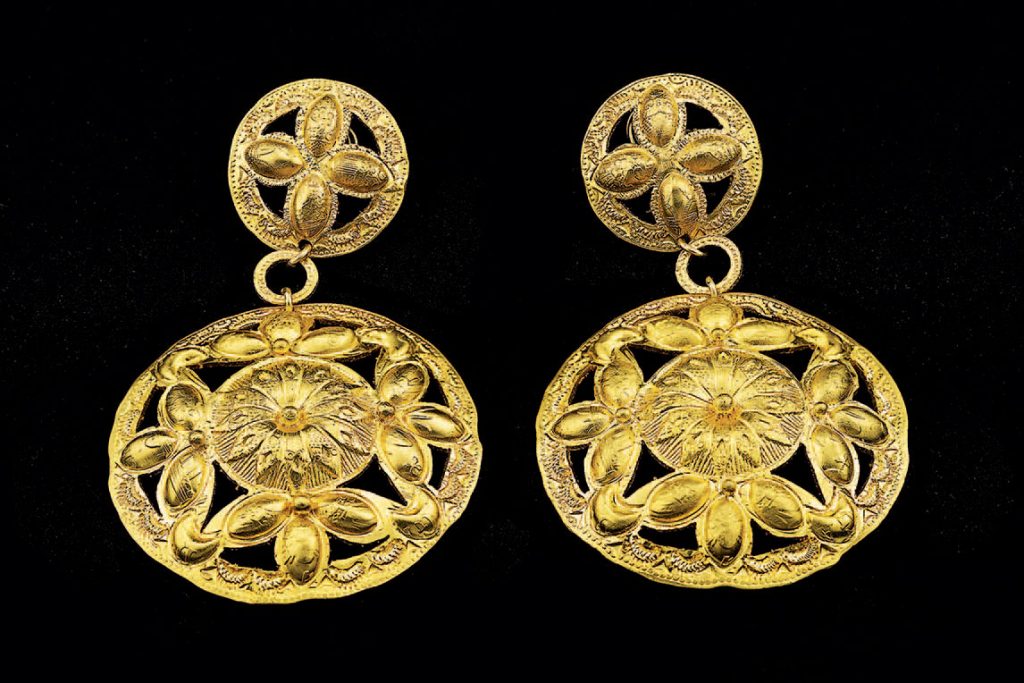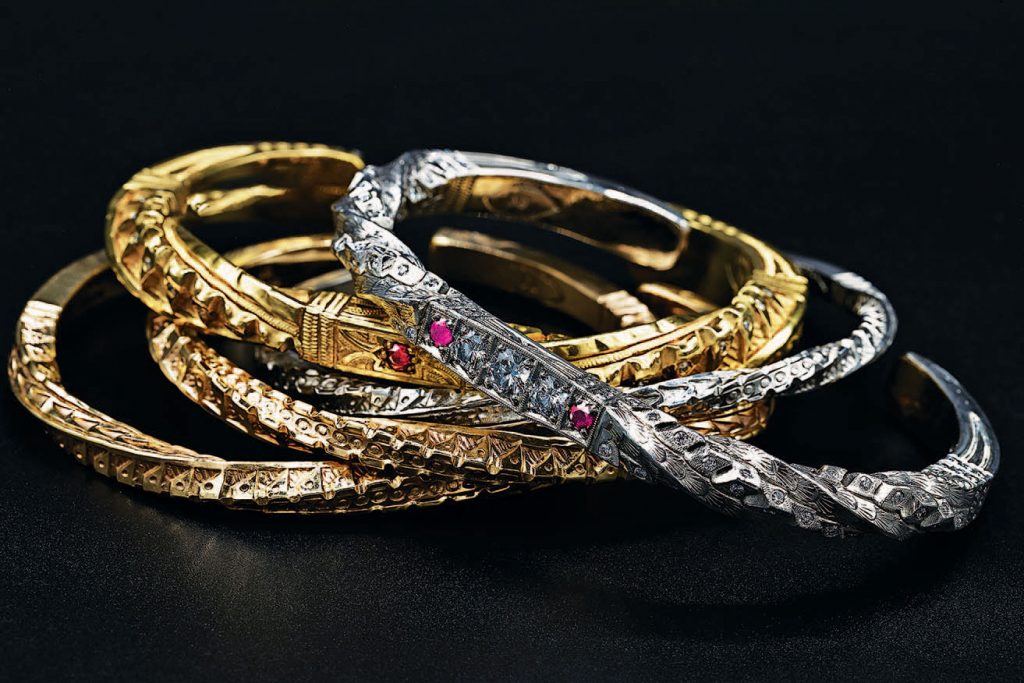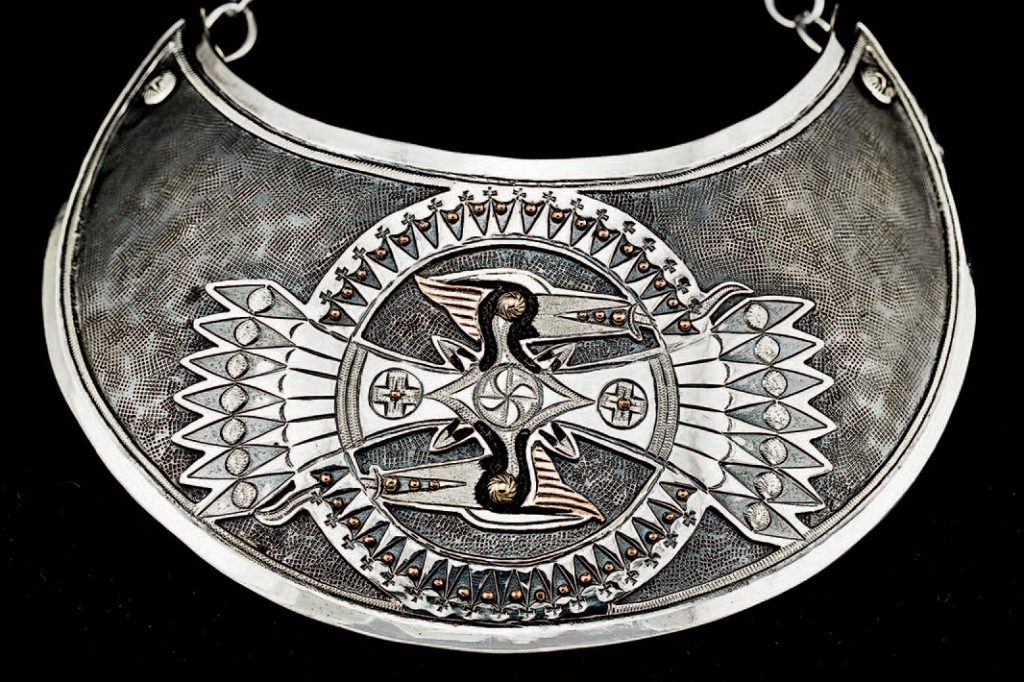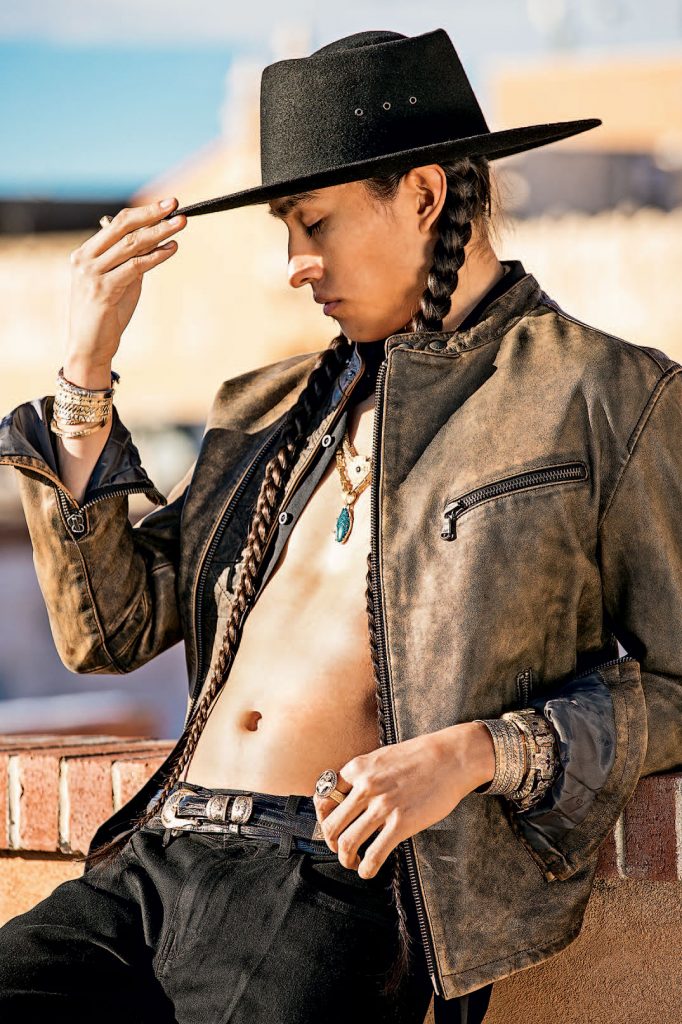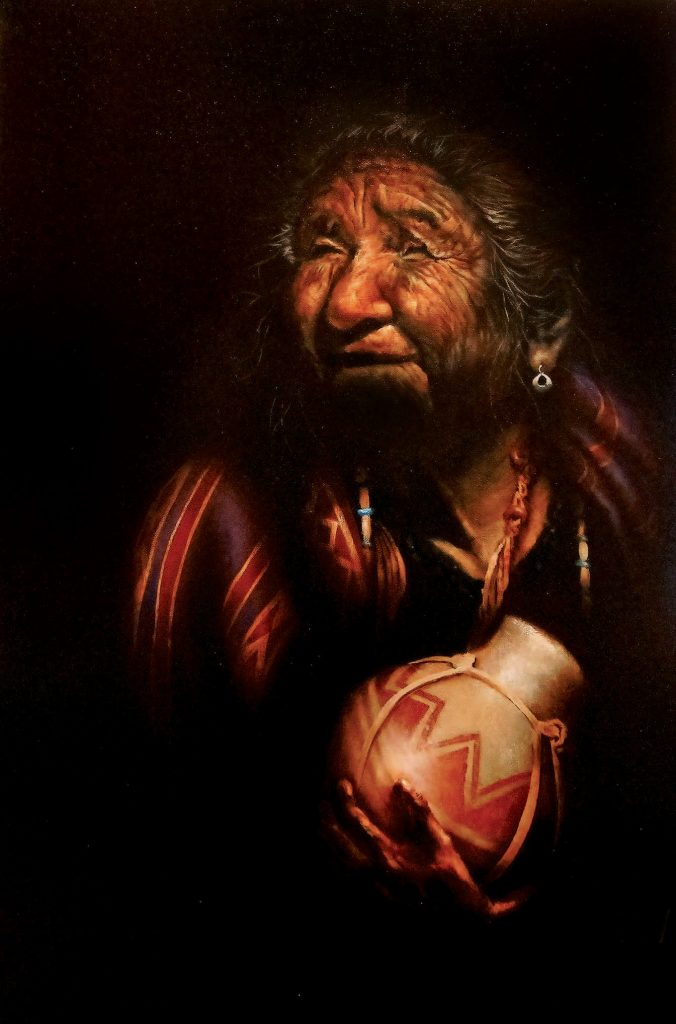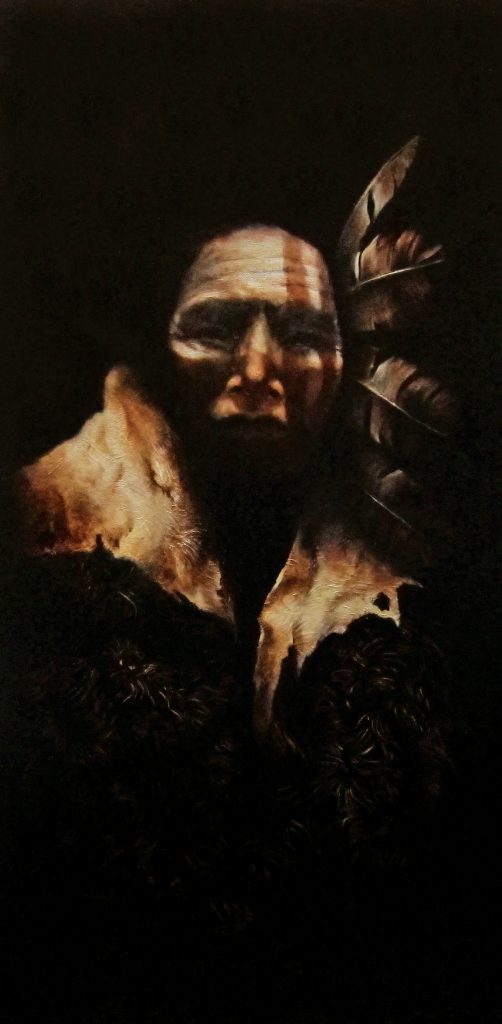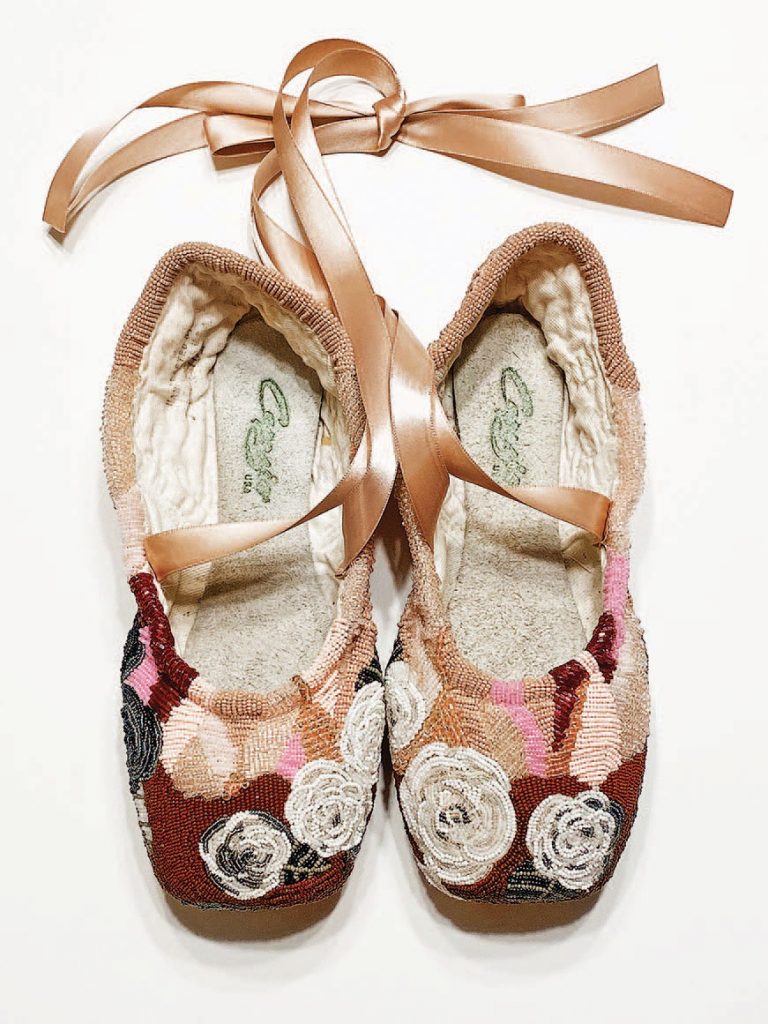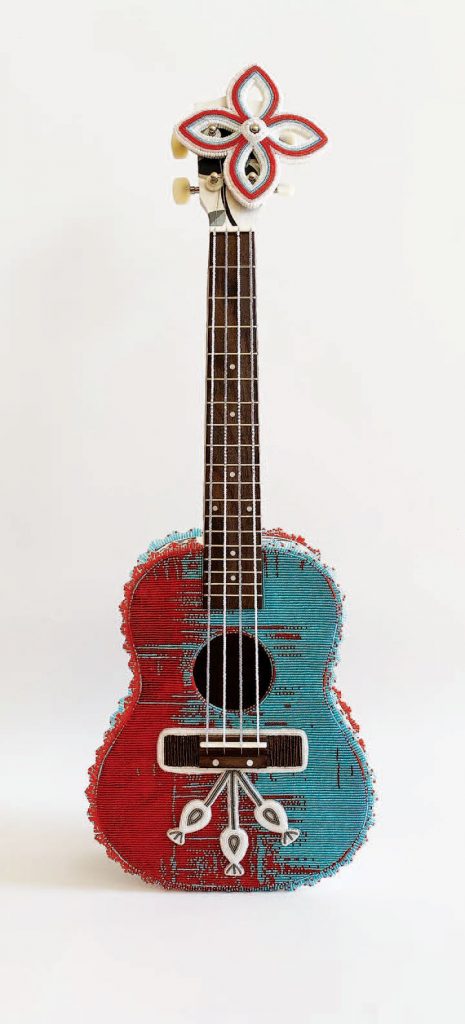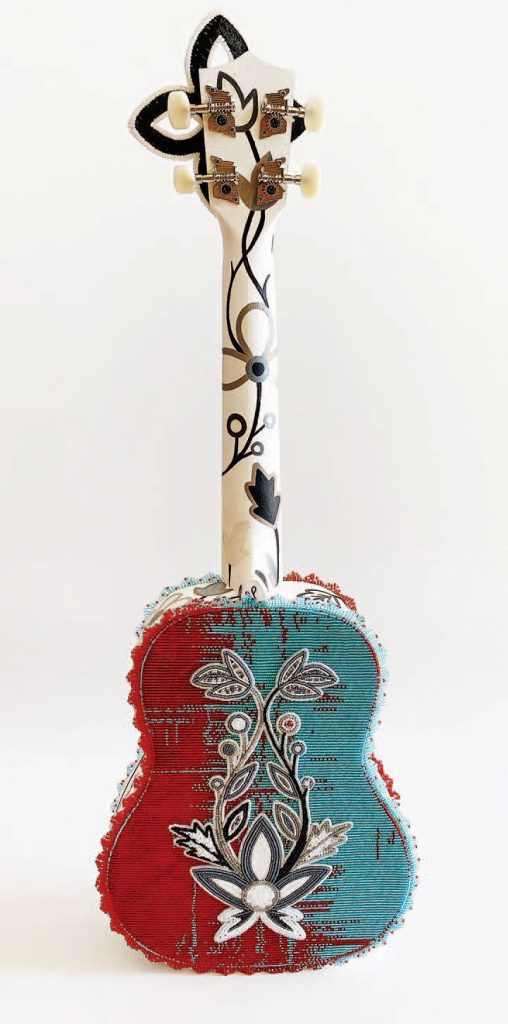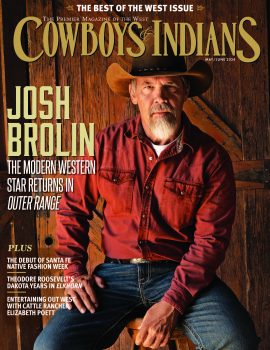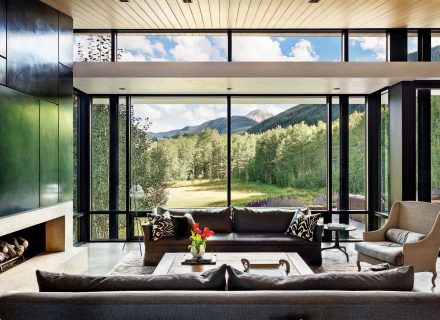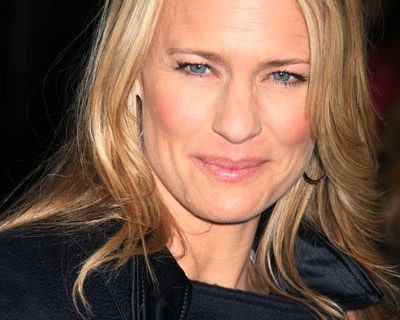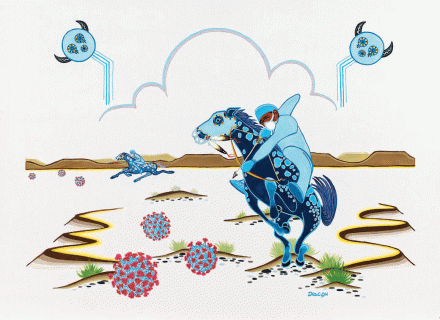An in-person Indian Market returns to Santa Fe this August. We talk to some exhibiting artists.
When the Southwestern Association for Indian Arts (SWAIA) announced that this summer’s Santa Fe Indian Market would once again be in person, we could almost smell the fry bread and NDN tacos.
“After last year’s pivot and presentation of a virtual Indian Market, we are excited to welcome visitors and artists back to our beloved 99-year-old event,” says Kim Peone, executive director of SWAIA, the nonprofit organization that produces the annual event.
SWAIA’s 2021Indian Market — Saturday-Sunday, August 21-22 — will be a COVID-conscious hybrid that combines both the new online marketplace and a smaller curated, in-person market at 75 percent capacity of the 2019 event. This year’s event will be ticketed; visitors will be able to purchase a limited number of tickets to shop the market over the two-day event.
We talked with some exhibiting artists about their art, their Indigenous heritage, and what they love about Indian Market.
Teri Cajero
Jemez Pueblo
Clay art has been practiced by the Hemish people for hundreds of years and has been passed on from generation to generation through oral and hands-on teaching. Growing up in a family of artists, I learned at a very young age. My mother first introduced me to clay by simply putting a ball of clay in front of me as she watched to see what I would do with it. That was the beginning of a lifetime of learning and taking on the responsibility of becoming a teacher who will pass on this form of art to the next generation. As I progressed in my art, I took the challenge of taking on two styles of artwork, my mother’s style (pots and figurines) and my father’s style (stone polished, carved, and etched). I have begun passing on the teaching with my children.
My culture, religion, language, Mother Earth, the teachings of elders, my children, family, and life inspire my art, motivating me to keep moving forward with it and keep contributing to the preservation of this art form, which has been a part of my people for hundreds of years.
All the materials used to create my pieces are gathered near and around my village of Jemez and are processed by hand from start to finish. Listening, feeling, and seeing allows the clay to take form. This process is beautiful, and each creation becomes one of a kind. The clay and the process evolve into the form it takes. My hands and eyes are simply there to guide it through its growth.
When creating a piece of art, I focus my love and positive energy into each, knowing that my work of art will be traveling, taking with it the love and positivity to a new home and family.
The love of my heritage is what drives me to keep creating. In each of my creations is an inspiration of life and the journey that each person is destined. The shape, symbols, and designs often tell someone’s journey at the particular point in time. In Jemez, our cultural and religious activities are performed for a reason, and that reason is life! Life is what each creation inspires.
Just like in life, we are all responsible to contribute to the beauty that every day brings. I love to share my work. I feel blessed that through my art I am able to share my culture with the world and send with each piece blessings from my people.
Arthur Holmes Jr.
Hopi
I started carving when I first had my daughter. Being Hopi, you’re supposed to start preparing stuff when they’re being born — there are ceremonies. I just started carving.
My dad is pretty known throughout carving. As I was growing up, I would help him when he was doing his carving. I was probably one of his chosen ones to help him, handle his material, and it rubbed off on me. It was years before I finally started picking it up myself. I give him a lot of credit, but then I started drifting away on my own technique.
Most carvers that I know use acrylic paint. I use oil paint, and that’s a big difference. My way of carving is don’t do a fast job. Collectors will know right off if you do a fast job. I’d rather do my pieces to a very high level — to be an artist pushing myself higher and higher and higher and doing really good quality work. I learned that from the beginning.
If you’re true to yourself and your art and you participate in ceremonies, you feel the energy going into your work. You put it into the wood itself. Most of the time when I pick up the wood, I don’t draw on it; I just visualize it. Sometimes I’m doing something else and I’ll realize a good vision and just gaze around my collection of wood and it’s right there. Once you start feeling like that and start carving, it doesn’t hesitate to come out. It doesn’t give you a hard time. Some are still on my shelf years later looking at me like, When are you going to get to me? If they give you a hard time, you put it to the side till it’s the right time.
My carvings are like my kids, like my babies. I cradle them in a laundry basket.
It’s real nice to be humble about my pieces. I think the Creator and the spirit live within me and my artwork.
Ellouise Padilla
Kewa Pueblo
I remember when I was about 5 was starting out, I had been saving change and bought some glass beads. Asked Mom for string and hook and made 10 strands of glass beads of all different colors. I sold it to my grandma for a dollar. That was my first sale. I started silversmithing at 15. At 16 I started doing beadwork on cowboy hats.
My dad always told us if you are doing jewelry, you are working closely with Mother Nature. It’s like giving people healing stones and good thoughts. The energy is in the piece. I get it from a lot of women: “Oh, this feels good, I love the way it lays.” I take this very seriously about my work. A lot of meaning to me when I start designing. I put all my heart into it with great energy and think about the people who will take it home and give it a good warm place, not a display or jewelry box.
When I’m selling at the Palace of the Governors, I talk to people, look at their features, and it gives me colors and styles that I think look good on them. To be a part of the Palace of the Governors, you have to demonstrate your work from the raw materials to the finished product.
All my inspiration comes from customers, especially women. I listen to them and see what they are comfortable with. I handmake my own beads; there aren’t many of us left that do. When you handmake your own beads, you cut them the way you want to. People can never figure out why the beads they buy that aren’t handmade never lie like mine.
I’m known for inlays and reversible work. I like to challenge myself by using different stones — lots of pink opal, jasper — and woods like purpleheart and zebra wood into my inlays. Sometimes I’ll use shells. I’m the only female that does everything: cutting my own stones and caps, all the silver, beads, hooks. I do it all. Everything I work with is all raw materials that I need to finish. I keep it handmade. That’s why I’m an original.
Avis Charley
Spirit Lake Dakota, Navajo
I learned about ledger art from the Blackfeet artist Terrence Guardipee, who explained the historical context, materials used, and artists from the past. He encouraged me to experiment and gave me a stack of antique paper.
I continued researching ledger art from the late 19th century and felt a need to bring a woman’s perspective into a male-dominated art form. I started sharing stories of parenting, family, and community. As I continued to grow as an artist, I went back to school at the Institute of American Indian Arts in Santa Fe. While there, I wanted to portray Indigenous women in modern settings, celebrating our resistance with vibrant details not possible in my ledger drawings. I transitioned from colored pencils into oil paintings.
I fuel my creativity by finding inspiration in our culture, friends, family, upbringing and experiences, adornment, and appreciation for other artists’ processes. I enjoy studying our ancestors’ historical photos to observe what they’re wearing, wondering about their personal stories and daily activities. When future generations look at my paintings, I want to leave them as many clues as possible about our style, stories, and experiences. Details are important to me — from jewelry and clothing worn to their body language. The future generations inspire my work the most because I know I’m creating the work for them.
My artistic intentions are to bring attention to and celebrate the evolving Native American identity, from the pre-reservation period to the present day, from ancestral homelands to city life. My work aims to elevate Indigenous visibility with authentic and accurate representation. I want my dynamic figures to come alive and engage us with their humanity.
My Dakota and Navajo heritage drive me to celebrate our people’s strength and resiliency by creating detailed figurative drawings and paintings honoring the female form. We have overcome a tragic past, and I am determined to transmute that pain into beauty.
Kenneth Johnson
Muscogee (Creek), Seminole
I am a custom jeweler working in precious metals and stones. I began creating art at Seneca Indian School and Sequoyah boarding schools in Oklahoma. I learned jewelry making after moving to New Mexico and meeting a Choctaw jeweler who taught me how to fabricate jewelry and stories.
Creativity wants to be expressed in its own right, and I’m here to sense how to express those inspirations with the right materials, proportions, and design and then execute these ideas into the physical realm. This has been true for me in jewelry, sculpture, and collaborative nonprofit projects such as Santa Fe Indian Market’s first collaborative concho belt and necklace projects, which netted over $100,000 for the organization. On a cultural plane, currently the Mvskoke Canoe Paddle Project is being prepared among Mvskoke and Seminole artists for display at the opening of the First Americans Museum in Oklahoma City on September 18, 2021. I like the challenge of making the most of the potential in these undertakings.
My work carries stories. I like to express myriad concepts of personal and world history in the canvas of metal using the characters of an alphabet made of symbols, stones, and techniques. This year I’m excited about high-karat gold, twisted bracelets, and designs using mokume gane, a Japanese pattern metal technique, which I’m creating at my new downtown design studio.
Indigenous aesthetics are continuously changing and are the basis of inspiration, with the source being the elements around us and the stories inspired by them.
Donn Clark (Donn the Bear)
Navajo, Chiricahua Apache
Even as a young adult, I didn’t know how important art would be in my life. When I became older, I began to understand that the art could be a great outlet of my experience and eventually take precedence in my life.
I am proud, but, moreover, thankful, that I am American Indian. American Indians will always carry a past that is a wilderness of horror. That history created a future that was dark and uncertain. But against all odds, they still persevered.
In my paintings, I’ve always been attracted to dark backgrounds, and that allowed me to create my own light and dark shadows, as well as convey uncertainty. I wanted to create something coming out of uncertainty and darkness and emerging into the light. So I created the series Out of the Darkness. For me personally, it was coming out of restriction — on a social, personal, and spiritual level — and coming into endurance and strength and overcoming tremendous hardship. I don’t know where it comes from or why it looks different, but I’m glad. I’m an individual, and I so appreciate that. Most people don’t fully appreciate individuality. I believe it’s a gift.
I am a member of AA — 26 years of sobriety. When I’m at AA meetings, I’m Donn the Bear, Grateful Alcoholic. My art got better as I got sober. I was able to tune in to the art and my music more. It really opened up after I got sober. It’s been an uphill battle. I attend my meetings regularly and try to help those still suffering. It is a disease. Once I found that out and that it wasn’t my fault, it really lifted a weight. Once I was able to understand that, I was able to attend to it as a disease. I turned myself in to rehab, one of the best things I’ve ever done. It was literally like night and day. As a Native American, I know alcoholism is a plague. Native Americans were “the drunken Indian” — that angered me. I got sober to save my life, but also so that I can stand up, not just for myself and my family but for those around me who still suffer.
Summer Yahbay (formerly Peters)
Saginaw Chippewa
I am making a name change from Summer Peters to Summer Yahbay. This is to drop the English name that was forced upon my family sometime in the late 1800s. We do know that our original last name was Yahbay, which means “buck” in our Ojibwe language.
I grew up drawing, painting — basically anything and everything. I even have a little bit of experience in stone sculpture, photography, and formal fashion design schooling. However, beads have my heart!
I watched my mom and grandma doing beadwork and I was intrigued. One day, I walked over to my grandma’s house and sat at her beading table and asked her to show me right then and there. She was busy, of course, but at that time, I knew I was going to learn somehow. I pretty much learned on my own after that. My mom has taught me techniques, but the way I bead is the way that I taught myself. It works for me, and I will probably always bead this way. I bead with one needle in the embroidery style.
I am very conscious of who I am as a Native American woman and, more specifically, an Ojibwe woman. I started carving my place in the juried-art-show world by showing my love of history. I started beading old black-and-white photographs of my family and then moved on to historical figures like Jim Thorpe and Maria Tallchief. I love beading items of substance that provide an educational experience. I love being able to teach about these people and their great contributions to the world.
The world inspires my creativity. I am inspired by the birds that sit on the fence outside my kitchen window at 8 in the morning when I’m making a fresh pot of coffee. I’m inspired by music, film, and social justice issues. Recently I made a beaded ukulele that was inspired by my son. I am inspired by math, history, pretty much everything. I am a sponge and I’m always open to new experiences and ideas.
My creations are a labor of love. I really put my heart and soul into what I make, from the littlest pair of earrings to the big masterpieces that take years to make. A part of me will always be carried with each piece. Beading is always a safe place for me. It’s a quiet therapy that immediately calms me and makes the world’s troubles disappear. Any of my pieces I have made are made with 100 percent good feeling and intention.
Do Indian Market And Santa Fe Like The Artists
Teri Cajero
There are so many things to do, see, experience during the Indian Market. If this is your first time to the Santa Fe Indian Market, I would suggest contacting SWAIA for market information and plan out your weekend so you get the maximum Indian Market experience. I would suggest to people that they visit the Palace of the Governors [Native American] Artisan Program, which I am a member of. There you will experience many forms of art and meet artists from the majority of New Mexico’s tribes.
Avis Charley
There are countless openings and receptions all week long and through the weekend. I definitely look forward to SWAIA’s exciting preview reception of the Best of Show award winners from each category on Friday evening at the convention center. I look forward to the official SWAIA Indian Market magazine with the directory of artists, booth locations, and a map where you can find your favorite artists. There are schedules and lists of events happening throughout the week in the magazine, such as galas and fashion shows. I usually create a list of artists I want to buy from and try to get to their booths early. Shopping and going home with one-of-a-kind pieces is definitely an annual highlight! I like to bounce around to my friends’ openings at various galleries and venues. There’s always something special happening, and it’s hard to attend them all. I would encourage visitors to check out MoCNA [IAIA Museum of Contemporary Native Arts] and their scheduled events and the IAIA Student Show on Saturday and Sunday. Blue Rain Gallery always has fabulous openings with some of my favorite artists. And then there is the food. One must get their New Mexico chile fix. A few of my favorite restaurants are The Shed, La Choza, and Tomasita’s. I like to end a busy weekend with a soak and massage at Ten Thousand Waves.
Donn “the Bear” Clark
I’ll be having rib-eye dinner with clients, both Friday and Saturday night, then looking to catch the residuals on Sunday sales. At times I’ve been asked to play on stage with my rock/jazz band, The Donn Clark Blues Band. We won’t be performing at this market’s event, but when we do play, we usually perform only original tunes on the plaza square. People should definitely visit the museums, galleries, cathedrals, and take advantage of special tours in Santa Fe, the historical sites, and the food of culture. Try to meet the artists, experience the art itself, and enjoy the entertainment and the authentic native foods.
Ellouise Padilla
I love to just tour around, especially for the fashion show. During the market, I dress up and wear my new pieces. I used to sit close to the stage, so I got to see the performance, but I still did my sales. I like to see the get-togethers because there are some artists you haven’t seen for years. People should go to the auction — I donate every year — and also the fashion show.
Kenneth Johnson
The art, the food (get you an NDN taco!), the opera, the interactions with the artists in town. Take a day to venture out and experience the local Native American communities and unique scenery.
Wednesday’s IAIA Gala Auction, which is virtual this year. Thursday’s gallery openings all over town. Friday, don’t miss SWAIA’s Competitions Best of Show preview night at the convention center. Most importantly, Saturday’s Indian Market booth-hopping frenzy to get those prize-winning pieces and shop/visit with your favorite artists!
Summer Yahbay
There is something magical about Santa Fe that you can’t experience anywhere else. For us artists, we are usually very busy up until the day of the show and the evenings provide relief to finally relax. We celebrate and unwind at night with new and old friends at Santa Fe’s awesome restaurants, like La Choza, Tomasita’s, and The Pantry. I’m definitely planning to check out Meow Wolf, which I’ve heard is an awesome experience. I recommend the annual fashion show, and there’s a weekend film series where people can watch a film from one of Native America’s emerging film stars. Also, there are dancers and singers that walk through the roads in front of the artist booths. Indian Market is really a great time. It’s my Christmastime. It’s the one weekend I look forward to all year long.
Photography: (All images) courtesy the artists
From our August/September 2021 issue



